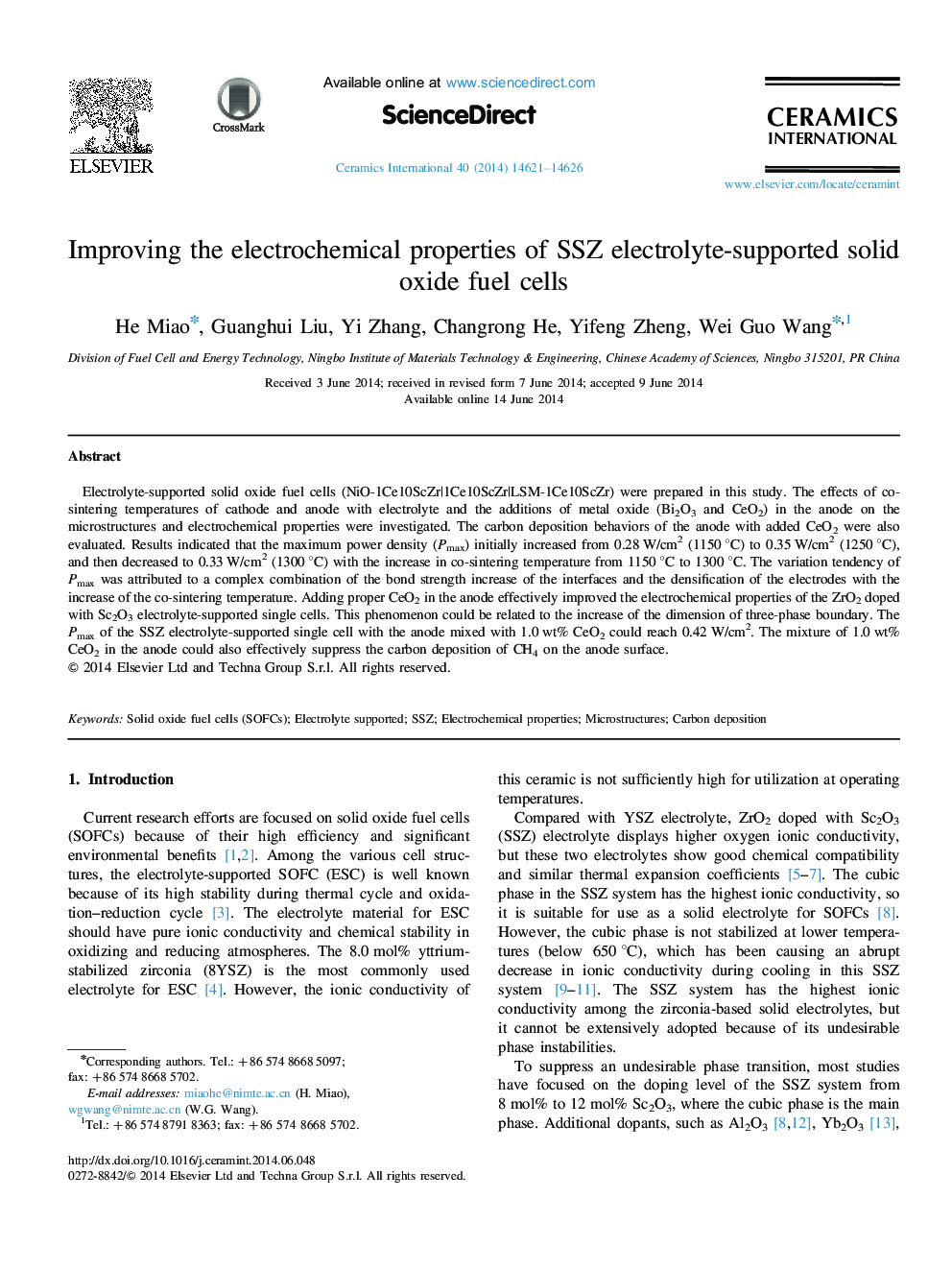| Article ID | Journal | Published Year | Pages | File Type |
|---|---|---|---|---|
| 1461199 | Ceramics International | 2014 | 6 Pages |
Electrolyte-supported solid oxide fuel cells (NiO-1Ce10ScZr|1Ce10ScZr|LSM-1Ce10ScZr) were prepared in this study. The effects of co-sintering temperatures of cathode and anode with electrolyte and the additions of metal oxide (Bi2O3 and CeO2) in the anode on the microstructures and electrochemical properties were investigated. The carbon deposition behaviors of the anode with added CeO2 were also evaluated. Results indicated that the maximum power density (Pmax) initially increased from 0.28 W/cm2 (1150 °C) to 0.35 W/cm2 (1250 °C), and then decreased to 0.33 W/cm2 (1300 °C) with the increase in co-sintering temperature from 1150 °C to 1300 °C. The variation tendency of Pmax was attributed to a complex combination of the bond strength increase of the interfaces and the densification of the electrodes with the increase of the co-sintering temperature. Adding proper CeO2 in the anode effectively improved the electrochemical properties of the ZrO2 doped with Sc2O3 electrolyte-supported single cells. This phenomenon could be related to the increase of the dimension of three-phase boundary. The Pmax of the SSZ electrolyte-supported single cell with the anode mixed with 1.0 wt% CeO2 could reach 0.42 W/cm2. The mixture of 1.0 wt% CeO2 in the anode could also effectively suppress the carbon deposition of CH4 on the anode surface.
